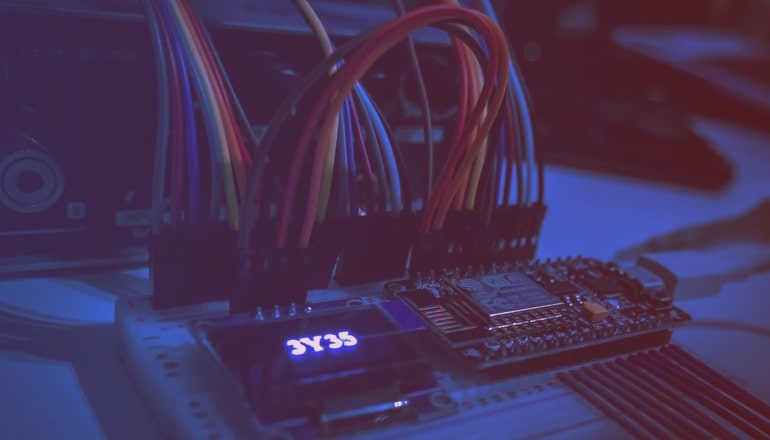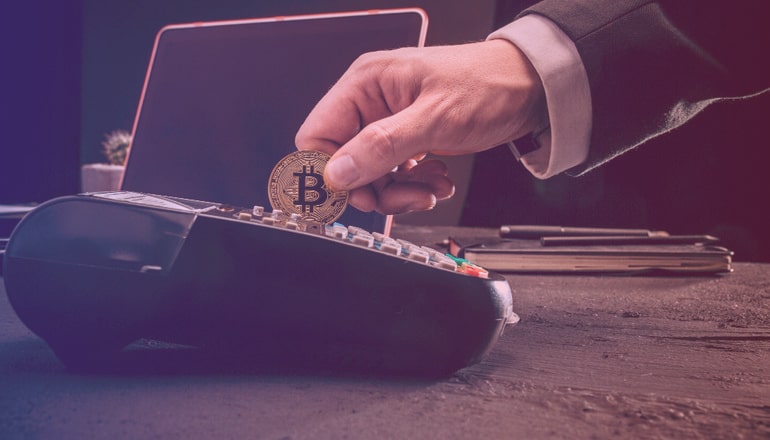Bitcoin means different things to different people. For some, it’s the future. For others, it is a speculative bubble about to burst any day now. And for most, Bitcoin is still a mysterious platform for internet money.
Fully understanding Bitcoin and the changes it is bringing to our world can be a lifetime pursuit. But it helps to start with a few basics. To get a sense of what Bitcoin really is, let’s take a look at the fundamentals of its history, technical underpinnings, status as a financial asset and more.
How Does Bitcoin Work?
Bitcoin is a form of digital money. Where most digital forms of money rely on a central party to make it work, like a bank or a payment processor, Bitcoin is maintained by a network of users. As an open network, anyone can become a user by simply downloading a piece of open-source software on their computer and connecting to the Bitcoin network through the internet.
Users on the network can send each other transactions. Once such a transaction is made, all computers on the network check the transaction to make sure the transaction is valid — for example, verifying that the coins in the transaction really exist and really belonged to the person sending the transaction. Because everyone checks everything, no one can be cheated.
New coins come into circulation through a process called “mining”, which is done by a subset of users called “miners”. Anyone can become a miner; however, mining does require computation resources and, therefore, electricity. About once every 10 minutes, in what is best understood as a lottery, one lucky miner is rewarded with new bitcoin. At first, these were 50 coins every 10 minutes, but this number drops every four years, until around the year 2140, when the reward drops to zero. At that point, there will be 21 million coins in circulation, and there will never be more.
In what is one of Bitcoin’s more elegant design features, miners actually provide a service to the network while investing computational resources into mining: they confirm the transactions that users send each other. Miners combine all transactions on the network into “blocks”, and the miner who wins the “lottery” has their block and all of the transactions in it accepted by the network. This way, even if two miners saw two conflicting transactions (for example, because a user tried to cheat and send the same bitcoin to two different people), only one of the transactions will go through.
For more information on mining, visit our “What Is Bitcoin Mining” guide.
Every time a new block is found, it refers to the previous block. Over time, the blocks form a “blockchain”. If it were to happen that two miners find a new block (“win the lottery”) at the same time, there can be a short period when there are two different, competing transaction histories. This is resolved through a race: the first blockchain to be extended with another block will be considered valid by the entire network. Over time, therefore, the Bitcoin network always settles on a single version of transaction history.
To read more about the foundational distributed ledger technology introduced by Bitcoin, read our guide to the fundamentals of a blockchain.
Finally, it’s worth noting that users on the network don’t identify themselves with their real names. Instead, they use Bitcoin addresses, which are seemingly random strings of numbers and letters. Because Bitcoin addresses cannot always be tied to a real-world identity, the electronic cash can be used fairly anonymously. (Though it should be pointed out that Bitcoin’s privacy guarantees are in actuality fairly weak for a number of reasons; unless you’re fairly savvy, it’s best to assume you are not fully anonymous.)
Who Invented Bitcoin?
Bitcoin was invented by Satoshi Nakamoto, (almost certainly) a pseudonym. No one has been able to conclusively connect the Satoshi Nakamoto moniker to an actual person or group of people.
Satoshi Nakamoto first introduced his proposal to the world in November 2008, when he submitted a white paper that describes Bitcoin to a cryptography mailing list. A couple of months later, Satoshi Nakamoto published the software. On January 3, 2009, Satoshi Nakamoto mined the first-ever Bitcoin block, dubbed the “genesis block”, setting the Bitcoin protocol in motion.
While he was actively involved with the Bitcoin project in the early days, Satoshi Nakamoto vanished in 2011, leaving few clues as to who he might be. Over time, there have been many instances of people claiming to be Satoshi Nakamoto, and others who’ve had that claim thrust upon them, but none with conclusive evidence. Sporadically, there have also been some messages from accounts associated with Satoshi Nakamoto since 2011, but many question the authenticity of these later messages.
There has been a lot of speculation about how many bitcoin Satoshi Nakamoto mined in the early days, when few people had even heard of Bitcoin. Estimates range from about 50 to 1 million. Interestingly, even if the high end of the estimate is correct, Satoshi Nakamoto appears to have touched very few, if any, of his coins.
In the end, most Bitcoiners agree that Satoshi Nakamoto’s true identity doesn’t matter much. The protocol stands on its own, regardless of who or what Satoshi Nakamoto was.

Who Controls Bitcoin?
Bitcoin is not controlled by any single manager or entity, but instead it is maintained by a network of users. One of Bitcoin’s most powerful and unique qualities is the fact that the transactions on its blockchain ledger are verified by the consensus of the network’s members and not by a third party or “trusted” authority.
In this sense, no single party or consortium “controls” Bitcoin in the way that a government controls a fiat currency or that a board controls a corporation. When users run a full Bitcoin node in order to validate transactions and blocks on the blockchain, they choose which specific protocol that node will use.
Is Bitcoin Anonymous?
Though there is a common misconception that bitcoin transactions can be conducted in the dark and free from third-party monitoring, bitcoin is not anonymous. It does, however, grant a level of pseudonymity that the traditional financial system typically does not (although purely cash-based transactions remain far more anonymous than bitcoin transactions).
Because every bitcoin transaction is publicly broadcasted and immutably recorded on the Bitcoin blockchain, it is possible for blockchain analysts to trace these transactions and potentially link them to real-world identities.
However, developers throughout the bitcoin space are consistently working on tools that are meant to help obscure bitcoin transactions and add additional anonymity layers.
For more information, check out our guide on Bitcoin anonymity.
How Can I Buy Bitcoin?
Though new bitcoin are minted through mining, and bitcoin can of course (like any other money) be accepted in trade, another easy way to get bitcoin is to buy it with fiat currency.

Bitcoin Exchanges
Most people purchase bitcoin through online exchanges. The majority of bitcoin exchanges operate an order book that matches buy and sell orders. This means that the “price” of bitcoin relative to fiat currency is determined by users of the exchange, through supply and demand.
Buying bitcoin on an exchange typically requires the use of a debit card or direct bank account transfer, and most exchanges require personal information in order to comply with anti-money laundering and know-your-customer regulations.
Over the Counter
Another common approach to buying bitcoin is the use of an over-the-counter (OTC) desk. Unlike going through an exchange, an OTC desk serves as a middleman that completes Bitcoin transactions without an order book — connecting buy and sell orders directly.
Bitcoin ATMs
Bitcoin ATMs are kiosks that resemble traditional ATMs but connect users to the internet and let them purchase bitcoin with bank cards or cash. Some bitcoin ATMs allow users to sell bitcoin as well.
In Person
It is, of course, also possible to buy bitcoin from someone who already owns bitcoin, in person. Many cities have Bitcoin meetups, where people might be willing to sell bitcoin. There are also websites on which buyers and sellers can find each other to meet up in person for a trade.
For more information on buying and acquiring bitcoin, visit our “How to Get Bitcoin” guide.
How Do I Store Bitcoin?
Slightly simplified, bitcoin are stored on Bitcoin addresses. They can be spent with “private keys”: unique strings of numbers and letters associated with these address. Therefore, the owner of the private key is essentially the owner of the coins. Storing bitcoin really means storing the private keys. This can technically be done in any way you like: on a USB drive, a piece of paper or you could even try to remember it (but this is not recommended).
Here are some of the more common solutions for storing your bitcoin:
Hardware Wallets
Many people use hardware wallets to store bitcoin. These are physical devices that encrypt the keys needed to spend bitcoin. Critically, these devices remain offline, so they cannot be hacked.
Software Wallets
Software wallets are pieces of software that you download and run on your computer or mobile device. While software wallets are often fairly easy to use, they are also connected to the internet, which can make them somewhat vulnerable to advanced hackers. That said, many software wallets can be used in combination with a hardware wallet for increased security.
Paper Wallets
Paper wallets are physical pieces of paper that contain your Bitcoin address keys and therefore your bitcoin. Paper wallets typically have a private key, Bitcoin address and a QR code representing them both printed on them. The downside of a paper wallet is that they can be used only to store bitcoin; you cannot spend from them. (Instead, you’d have to insert the private key in a software wallet, at which point the paper wallet shouldn’t be used again.)
Because paper wallets are actually relatively difficult to set up securely, their use is not really recommended any longer.
Can I Keep My Bitcoin on an Exchange?
The majority of bitcoin exchanges have bitcoin wallets built in to enable the deposit and withdrawal of assets. When a user deposits bitcoin into an exchange’s wallet, that user is trusting the exchange with control of that bitcoin, and naturally, doing so brings a certain amount of risk.
Large exchanges may hold on to cryptocurrency for millions of unique accounts and take a variety of measures to ensure that these funds are safe so that they can retain their customers’ trust. But, over the years, many online exchanges have proven vulnerable to hacks, while other, less reputable ones have lost or even stolen user funds.
As a result, keeping your bitcoin on an exchange as a primary storage facility is generally not advised.
For more best practices on storing bitcoin, read our guide to bitcoin wallets.
How Do I Keep My Bitcoin Safe?
The best way to keep bitcoin safe is to take precautions to protect the keys that grant access to your Bitcoin address.
But ultimately, the ideal process for keeping your coins safe depends largely on what works for you. If you are someone who keeps forgetting passwords, losing phones and displacing important documents, and you’re not dealing with life-changing amounts of bitcoin anyway, frankly, maybe a reliable third-party wallet would be best for you. (Even though this is certainly not ideal for overall security.) If you are tech-savvy and are dealing with large amounts of money, you could consider a multisignature setup with multiple wallets and encrypted backups dispersed over different locations. And there are also many solutions between these two extremes.
That said, in general, it’s advised to at least store your private keys yourself and keep a backup (typically a seed phrase) in a secure location.
To read more about bitcoin addresses, private and public keys and protecting your HODLings, check out our guide on keeping bitcoin safe.
How Can I Use Bitcoin?
Once you’ve joined the revolution by getting your hands on some bitcoin, you may be wondering how exactly you should use it. There’s no prescribed way to make the most of your bitcoin, but there is an increasing number of options.
Making Purchases With Bitcoin
A growing list of retailers and service providers accept bitcoin as payment. Using bitcoin at one of these retailers can be as easy as selecting a “pay with BTC” option at checkout.
Even if retailers or service providers don’t accept bitcoin directly, you may use bitcoin to purchase a gift card for that retailer or service provider. Several gift card websites accept bitcoin in exchange for gift cards to major online and brick-and-mortar retailers like Amazon, Target and more. (This could come in handy if you don’t have a bank account or there is another reason you prefer not to sell bitcoin for fiat currency.)
Get Paid in Bitcoin
Whether you have a daily job, sell physical goods or perform one-off services, there are advantages to accepting bitcoin for payment.
For example, because of its borderless nature, bitcoin is useful for those who live in a different part of the world from whoever is paying them. It’s also an ideal payment solution for those who live in countries where the fiat currency is particularly volatile or difficult to trust.
Individuals interested in getting paid in bitcoin can search for freelance jobs that offer BTC payment on listing sites like Cryptogrind. Businesses that are interested in accepting bitcoin payments can leverage services offered by payment processors like BitPay and BTCPay Server.
Is Bitcoin a Good Investment?
Questions about the value of bitcoin as an investment will likely differ depending on who you ask.
Those with a vision of a fully-distributed future in which the lack of a centralized overseer becomes key to an asset’s value will tell you that, yes, bitcoins are poised to become only more valuable in the future. Others who put more value in the traditional trust afforded by banks and government institutions would likely steer you away from bitcoins as an investment.
While determining how “good” any investment will be is ultimately a guessing game, there are some tried and true ways to determine an asset’s worth. One of the simplest ways to think about bitcoin as an investment is to consider its rise against the U.S. dollar. Recently, bitcoin prices eclipsed $1,000 and have reached beyond $1,500. If you had invested in the digital currency when its worth was still hovering around $150 just a few years ago, or when it was first introduced in 2009 and worth nothing against the dollar, you would probably be convinced that it made for a good investment.
Furthermore, an underpinning concept behind Bitcoin is that there will only ever be 21,000,000 tokens, meaning that it may stay consistently valuable or increase in value relative to other types of currency which can be printed endlessly. Other reasons that the asset seems like a good investment include its growing popularity, network effects, security, immutability and status as the first ever in a growing world of digital currencies.
That being said, there is at least one significant argument for limiting bitcoins to a small portion of your portfolio at the most. Bitcoin is known for stark jumps in price, high peaks and deep valleys that would make it difficult to have confidence in the asset as a long-term money maker that can be depended on. Tying every dime you have to such a volatile asset would be imprudent. A good rule to follow is never to invest more than what you would be willing to lose.
How Does Bitcoin Compare to Traditional Assets?
Many people who accrue bitcoin don’t necessary “do” anything with it other than hold (or “HODL”) it as a long-term investment or savings. The bitcoin price relative to fiat currency has been very volatile, but has been trending up over the years. Some users also describe bitcoin as a digital store of value, likening it to a digital version of gold.
For more information about the inherent value built into bitcoin, visit our guide “What Gives Bitcoin Value?”
Bitcoin is one of the most unique technologies to emerge since the advent of the internet. Some believe it’s the most important invention since agriculture, while others think it’s the most overhyped financial asset since tulip bulbs. But there are some distinct advantages that Bitcoin has as an asset compared to others in the traditional economic system.
Bitcoin is inflation resistant. By design, there will only ever be 21 million bitcoin. Where the value of fiat currencies is inflated and manipulated by central banks and commercial banks, Bitcoin’s emission schedule is predictable and limited. This is also why some people consider it a good store of value: a “digital gold”.
Bitcoin is also highly censorship resistant and difficult to confiscate. While authorities can strip individuals of their bank accounts, seize their traditional assets or flag their credit cards, it is much more difficult to stop an individual from using bitcoin when and where they want.
This also means that, compared to fiat currencies, bitcoin is much easier to transfer across borders. While it can be difficult, slow and expensive to send dollars, euros or yen across countries, bitcoin can seamlessly be transferred and sent around the world, regardless of an individual’s location.
Transactions are connected to a user’s Bitcoin address, which is stored on its general ledger, called the blockchain. If that address is linked to a real identity, transactions can be traced back to the user; if it isn’t, they can’t. This relative anonymity makes the platform appealing for things like incognito purchases over the internet.
A key component of Bitcoin’s blockchain is the fact that it is an open, distributed ledger. Through the distributed nature of this ledger, the transactions on the blockchain are verified by the consensus of every member, offering security and trust without a third-party overseer.
Bitcoin can also be difficult to utilize as an investment or savings asset because of its relative novelty in our financial system. Financial regulations surrounding bitcoin and other digital currencies are constantly evolving and it can be difficult to source sound advice around how to manage it, integrate it into your financial portfolio and pay taxes on it.
To read more about the financial regulations surrounding the original cryptocurrency, visit our bitcoin and taxes guide.
Is Bitcoin Legal?
In a technical sense, bitcoin can be used anywhere that the Bitcoin network can be accessed (essentially, anywhere with internet access), and governments or authorities would have a difficult time restricting their citizens from doing so. That said, governments could make using bitcoin an illegal act, and some have.
Few countries, like Ecuador, have deemed bitcoin completely illegal. Some others, like China, have put varying restrictions on the use of bitcoin and other cryptocurrencies, deeming their use legal for some purposes and illegal for others. Yet other governments have issued laws or reforms that clearly indicate that bitcoin is legal. And most governments around the world have not taken an official stance on bitcoin.
Overall, in most parts of the world, it is legal to send, receive, mine and generally use bitcoin as an individual.
For more information about Bitcoin’s legality, visit our “Is Bitcoin Legal?” guide.
What Are the Obstacles Faced by Bitcoin?
While Bitcoin adoption had been growing over the years, there are still not that many places to spend coins. On top of that, it is usually not possible to pay taxes or bills in bitcoin. Therefore, instead of paying with bitcoin directly, many users still find themselves selling bitcoin for fiat currency in order to pay their expenses.
Bitcoin’s value has also proven to be quite volatile over the years. While most (though not all) fiat currencies tend to have relatively stable purchasing power over time, there have been times when bitcoin lost well over half of its purchasing power within months. On the flipside, bitcoin has also experienced years when the value surged.
Compared to most bank accounts and payment providers, Bitcoin can be relatively hard to use. Or perhaps more specifically: Bitcoin can be relatively hard to use securely. Like cash in your wallet, if you lose your bitcoin (your private keys) they are really lost; there is no help desk to call and get your money back.
In most casual conversations, you can get away with knowing that bitcoin is, basically, a digital currency. But of course, it’s much more complicated than that and utilizing it to its fullest potential comes with a steep learning curve.
Can Bitcoin Scale?
The ongoing debate about whether or not Bitcoin can scale sufficiently on its path to mass adoption has led many people to question if it will ever reach that point at all.
The Bitcoin protocol’s main focus is providing security in transactions. It prevents double-spending by making it incredibly difficult to reverse a transaction because of the energy spent verifying these transactions. It only releases a set number of bitcoins into the world — and it does so very slowly. It is meant to be simple in purpose but highly secure in practice. When all of these feats are achieved, it eventually obtains the characteristics of a store of value, and that is all Bitcoin needs to be.
Bitcoin is a low-level protocol that can be used in conjunction with other protocols. The scaling opportunities in Bitcoin lie in the additional protocol layers that will be built on top of it, such as Lightning Network. As many have come to realize, it is these other protocols that can help to solve many of bitcoin’s scaling issues without having to alter Bitcoin’s current software. The idea, as Bitcoin began to grow, is that layers will be built on top of it.
What Are Bitcoin Forks?
The word “fork” is somewhat confusing because there are different kinds of “forks” that can mean very different things.
Codebase Fork
A codebase fork is a copy of the code of a software implementation. A codebase fork typically makes tweaks to the original codebase. In the context of Bitcoin, codebase forks can be entirely compatible with the Bitcoin protocol, they can cause a blockchain fork or they can establish a whole new cryptocurrency.
Blockchain Fork
A blockchain fork happens when a blockchain branches into two versions of transaction history. This can happen for a number of reasons, can be expected or unexpected and can, depending on the circumstances, lead to a number of outcomes, ranging from a single orphaned block to a whole new cryptocurrency.
Hard Fork
A hard fork is a type of protocol upgrade that loosens or removes rules. If all users upgrade, a hard fork doesn’t cause a blockchain fork. Especially in the context of Bitcoin, some argue that unless all users upgrade, the “upgraded” protocol shouldn’t be called a hard fork at all, but a new cryptocurrency or “forkcoin”.
Soft Fork
A soft fork is a type of protocol upgrade that tightens or adds rules. Soft-fork upgrades can cause blockchain forks, but enforcement by a majority of hash power guarantees eventual convergence on the same transaction history. A miner-activated soft fork (MASF) is triggered by hash power, while a user-activated soft fork (UASF) is activated by users.
Gray Areas
While the different terms seem clear enough, the reality of Bitcoin is complex. The difference between hard and soft forks is not always obvious, and sometimes it’s not even clear what should be considered a protocol upgrade at all. There are a number of cases in which experts to this day disagree on how certain events should be categorized, and there have been politically motivated attempts to rewrite history to boot.
What Is a Bitcoin Improvement Proposal (BIP)?
Bitcoin Improvement Proposals, or BIPs, are the standards by which changes to the Bitcoin protocol are recommended. They can include very significant protocol changes — including updates that require soft forks or hard forks — or changes to software implementations or the BIP process itself.
BIPs were introduced by early Bitcoin developer Amir Taaki, originally based on the process used for improving the programming language Python. Taaki submitted the first BIP in 2011.
To read more about the history of BIPs and how they lead to changes in Bitcoin, check out our guide on the process.
Bitcoin Layer Two
Periods of very high network activity on Bitcoin do not allow for practical uses such as buying coffee or transacting in small amounts due to the high transaction fees that come with high network usage. Solutions to this problem have come in the form of second-layer technologies, like Lightning. Lightning is a layer built on top of Bitcoin that allows for near-instant micropayments by settling transactions off-chain.
As a second layer scaling solution to Bitcoin, Lightning is computer code which gives you a mathematical guarantee to claim the funds being transacted with. The Lightning Network is perhaps the most promising (but not the only) second-layer technology being developed that will make this possible. Certainly, there will be many more use cases we may not have even imagined yet.
What Is the Lightning Network?
The Lightning Network is arguably the most popular and well-developed “layer two�? protocol for Bitcoin, designed to facilitate faster, cheaper and more private payments. In essence, the Lighting Network exists on top of Bitcoin, creating channels for payments that are not recorded on the Bitcoin blockchain (and can thus be facilitated much more quickly and for smaller fees).
Funding these channels or closing the transactions in them does require recording on the blockchain, thus utilizing the network’s robust double-spend protection.
To read more about how this layer two solution visit our Lightning Network guide.
Quantum Computing As a Threat to Bitcoin
The concept of quantum computing stems from the 1980s and in recent years, quantum computers that can solve problems that are out of reach for standard computers have emerged. Some have suggested that a quantum computer would be strong enough to threaten Bitcoin, by becoming strong enough to break public-key cryptography, dominate the mining landscape or otherwise change the dynamics of computing such that Bitcoin is no longer able to function the way it was designed.
Among the threats that Bitcoin faces, quantum computing is one that has not developed far enough yet to truly test the technology. But it appears that Bitcoin could be adapted to exist effectively alongside more powerful quantum computers if necessary.
To read more about what the growth of quantum computing could mean for Bitcoin, read our guide.




